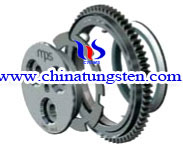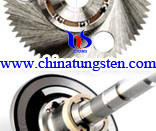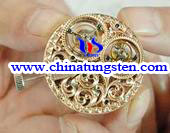Actuator in Self-winding Watches
What is Actuator in Self-winding Watches?
An automatic or self-winding watch is a mechanical watch, whose mainspring is wound automatically by the natural motion of the wearer's arm, to make it unnecessary to manually wind the watch. Most mechanical watches sold today are self-winding.
How Self-winding Works?
The mechanism of most automatic or self-winding watch movement is based on the hand-winding mechanical watch movement.
To become automatic, the self-winding watch contains a semicircular 'rotor', an eccentric weight that turns on a pivot, within the self-winding watch case. The normal movements of the user's arm and wrist cause the rotor to pivot back-and-forth on its staff, which is attached to a ratcheted winding mechanism. The motion of the wearer's arm is thereby translated into the circular motion of the rotor that, through a series of reverser and reducing gears, eventually winds the mainspring. Modern self-winding mechanisms have two ratchets and wind the mainspring during both clockwise and counterclockwise rotor motions.



The fully-wound mainspring in a typical self-winding watch can store enough energy reserve for roughly two days, allowing automatics to keep running through the night while off the wrist. Usually automatic or self-winding watches can also be wound manually by turning the crown, so the watch can be kept running when not worn, and in case the wearer's wrist motions are not sufficient to keep it wound automatically.
In it, tungsten alloy is a very important component. So if you have any interest in self-winding watch, please feel free to email us: [email protected], [email protected] or call us by: 0086 592 512 9696, 0086 592 512 9595. Or you can see more details in http://en.wikipedia.org/wiki/Automatic_watch






